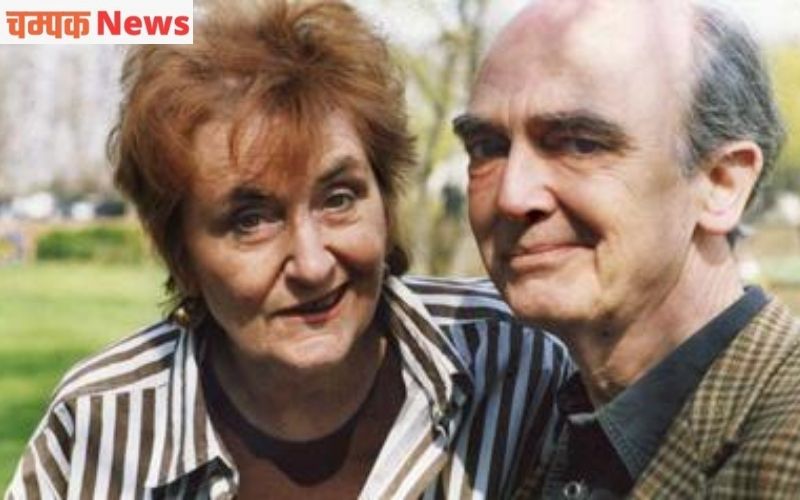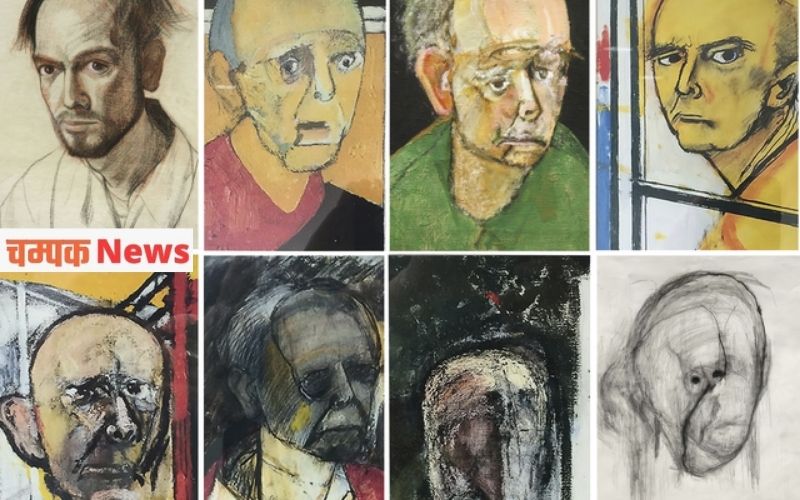Hello friends, today we will talk about William Utermohlen Wikipedia, Biography, Disease, Career, Death & More

William Utermohlen Wikipedia – William Utermohlen was an American figurative artist who became known posthumously for his self-portraits created after his diagnosis of Alzheimer’s disease in 1995. Although William Utermohlen’s career lasted from 1957 to 2001, it is his later works that are most acclaimed.
Table of Contents
William Utermohlen Wikipedia, Biography

Born to first-generation German immigrants in South Philadelphia, William Utermohlen earned a scholarship at the Philadelphia Academy of Fine Arts (PAFA) in 1951.
After completing his military service, he studied in Western Europe in 1953. While studying there, William Utermohlen gained inspiration from Renaissance and Baroque artists; graduating from PAFA in 1957.
William Utermohlen moved to London in 1962 and married art historian Patricia Redmond in 1965.
William Utermohlen relocated to Massachusetts in 1972 to take a position as an art teacher at Amherst College, before returning to London in 1975.
In 1991, Utermohlen began experiencing memory loss. After being diagnosed with AD in 1995, William Utermohlen began a series of self-portraits that lasted until 2001.
The portraits were influenced by Francis Bacon and the German Expressionist movement, but have also been compared to artists such as Ivan Seal and Mervyn Peake.
As William Utermohlen’s condition progressed, the self-portraits show expressions of what Nicci Gerrard described as “emotional modernism”. After spending around six years in retirement due to his condition, He died on March 21, 2007, at the age of 73.
In the years after the publication of his works in The Lancet in 2001, William Utermohlen’s self-portraits have been analyzed for their importance in understanding the effects of AD over time, but the portraits can also help understand how cognitive and visual pathways work together.
They have also been displayed in several exhibitions, such as the Loyola University Museum of Art in Chicago, and at the Two 10 Gallery London. William Utermohlen’s self-portraits were the inspiration for the 2019 short film Mémorable.
William Utermohlen Disease
In 1994, William Utermohlen was commissioned by a client to create a family portrait. After around a year, Patricia took the client to William Utermohlen’s studio to check the progress, where they noticed that the portrait had not changed in nine months. Patricia, believing Utermohlen was depressed, sought medical advice. William Utermohlen was diagnosed with Alzheimer’s disease in August 1995, at the age of 61. William Utermohlen was sent to the Queen’s Square Hospital where a nurse, Ron Isaacs, became interested in his drawings and asked him to start drawing self-portraits..
The first of these, Blue Skies, is a self-portrait of Utermohlen gripping a yellow table, in an interior that The Wall Street Journal described as “an empty studio”. When neuropsychologist Sebastian Crutch visited William Utermohlen in late 1999, William Utermohlen described this painting as representative of him trying to hang on and avoid being swept out of the open window above. Polini likened the depiction of him holding onto the table to a painter holding onto his canvas, saying that “in order to survive, he must be able to capture this catastrophic moment. William Utermohlenmust depict the unspeakable.” Blue Skies was also William Utermohlen’s last painting to be considered “large scale”. Created the same year, the sketch A Welcoming Man shows a disassembled figure, representing the loss of spatial perception.
During William Utermohlen’s work on the Conversation series, William Utermohlen began to experience memory loss and an inability to remember recent events, and eventually found himself unable to navigate the route to his apartment or how to tie his necktie. Between 1993 and 1994, William Utermohlen created a series of lithographs depicting short stories written by World War I poet Wilfred Owen. The figures were more mask-like than in the Conversation pieces. The artworks, which show a collection of disoriented and wounded soldiers, were described by Chris Boicos, William Utermohlen’s art dealer, as a metaphor for the forthcoming Alzheimer’s disease diagnosis a year later. By the time Utermohlen finished the lithographs, William Utermohlen would often forget to show up for teaching appointments.
William Utermohlen began a series of self-portraits after his diagnosis in 1995. The earliest of these, the Masks series, are in watercolor and were completed between 1994 and 2001. William Utermohlen’s last non-self-portrait dates from 1997 and was of Patricia. It was titled Patrice Polini as Pat.
William Utermohlen Career
William Utermohlen’s birth took place on December 5, 1933, in Southern Philadelphia, Pennsylvania, the only child of first-generation German immigrants. During William Utermohlen’s childhood, the section of Philadelphia was split along language lines William Utermohlen’s family would’ve been in the German-speaking part of the city, but inward migration across the United States resulted in William Utermohlen’s family living in the Italian bloc.
Due to racism and ethnic relations present within Philadelphia, William Utermohlen’s parents dissuaded him from going outside. Manu Sharma of STIRworld speculates that his parents’ protectiveness may have resulted in the development of Utermohlen’s artistic creativity.
William Utermohlen earned a scholarship at the Pennsylvania Academy of Fine Arts (PAFA) in 1951, where he was educated by realist artist Walter Stuempfig. William Utermohlen completed his military service in 1953, which included two years in the Caribbean. Shortly after completing military service, William Utermohlen studied in Western Europe and traveled through Italy, France, and Spain where William Utermohlen was heavily influenced by the works of Giotto and Nicolas Poussin.
In 1957, William Utermohlen graduated from PAFA, moving to England shortly thereafter.
Eric Molinsky of Studio 360 noted that William Utermohlen left PAFA to participate in the London art scene at the time while William Utermohlen’s wife claims that an additional reason for going to England was because of his appearance. She said that “When he was in art school, he was very pretty, and he was chased around by all the homosexual tutors and everybody else… he didn’t care but he didn’t fancy them. When he came to England he discovered, amazingly, because the English had always been like this, that we quite liked girlish men.”
William Utermohlen Death
William Utermohlen had retired from painting by December 2000, and could no longer draw by 2002. In 2004, William Utermohlen was in the care of the Princess Louise nursing home. William Utermohlen died at the Hammersmith Hospital on March 21, 2007, as a result of pneumonia at the age of 73. Patricia said that “really he was dead long before that, Bill died in 2000, when the disease meant he was no longer able to draw.”
We hope that now you have found all information about William Utermohlen Wikipedia, Biography, Disease, Career, Death & More
Read More: Militta Bora Wikipedia

